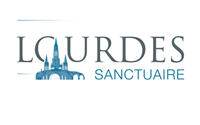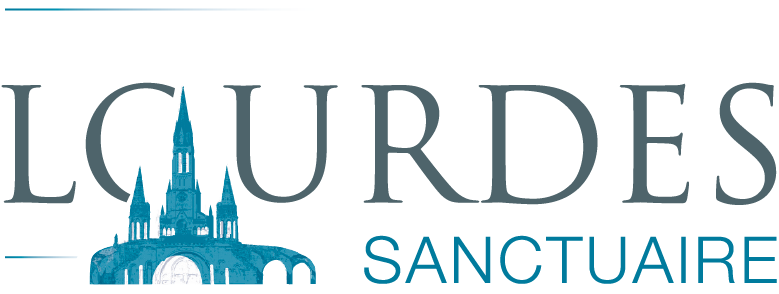The Apostolic Letter by Pope Francis Sanctuarium in Ecclesia states: “In the Shrine, the doors are wide open to the sick, the disabled, and above all, to the poor, the marginalized, refugees and migrants” (SiE 4). These words concern all those working in the Shrines, but in a very special way it touches the physicians, nurses, and healthcare workers, who every day welcome the pilgrims, and especially the sick and disabled, in Lourdes with professionalism, dedication and faith.
The Shrine as a “field hospital”
The expression used by Pope Francis, who labelled the Church as a “field hospital”, has become common in the meantime: “I see clearly that the thing the Church needs most today is the ability to heal wounds and to warm the hearts of the faithful; it needs nearness, proximity. I see the church as a field hospital after a battle. It is useless to ask a seriously injured person if he has high cholesterol and about the level of his blood sugars! His wounds have to be healed first. Then we talk about all the rest. Heal the wounds, heal the wounds…. And we have to start from the bottom”.
By this meaningful image, Pope Francis prompts us to verify, in some respects, the relationship between the Church and the world as well as the mission each faithful has by virtue of his baptism. Since “the Shrine has <enormous symbolic value> in the Church” (SiE 1), the Pope’s expression can also be used for a Shrine, which is a true “field hospital”.

Evangelization work
At a time like ours, which is often marked by individuals withdrawing into themselves without any possibility of inter-personal relationships and by the fact that delegating seems to be gaining the upper hand over direct participation, the call to social responsibility commits people to a testimony showing that they care for their brothers and sisters in greater need. There is nothing extraordinary for us in that; in fact, this is our history. Following the Lord’s word, we stubbornly insisted on favouring everything that the world has refused, considering it useless and underperforming. The chronically ill, the dying, outsiders, disabled people, and any other person who in the eyes of the world expresses lack of future and hope encounter the commitment of the Christians. We have examples that forcefully remind us of the holiness of men and women who made this programme a concrete preaching of the Gospel of Jesus Christ and, with it, the start of a true cultural revolution. Faced with this holiness, any possible alibi collapses. Utopia gives way to credibility and to the passion for truth and freedom which find their synthesis in a love that’s given without asking for anything in return.
Before this backdrop, the precious assistance provided by so many physicians and nurses at the Sanctuary of Lourdes acquires significance as true Christian preaching, taking the dignity of each individual into serious consideration. How important this presence is in the life of the Sanctuary! – not only for those working there day by day, who are tangible signs of proximity and assistance, but also for the groups and associations coming to the Sanctuary as pilgrims. At a time when everything seems to become possible only because it is bought, there should be many more signs showing that love and solidarity have no other price than personal commitment and sacrifice. This testimony demonstrates that a person’s life finds its complete fulfilment only when it is placed before the backdrop of gratuitousness.
The Shrine as a place of mercy
Sanctuarium in Ecclesia reminds us that the Shrine is a privileged place where the pilgrims experience God’s mercy, especially when they receive the Sacrament of Reconciliation (cfr. SiE 4). It is sufficient to see the crowds in the Chapel of Reconciliation to understand the meaning of these words. But physicians, too, can let the sick experience God’s mercy by their highly valuable and often silent ministry. Visiting the sick belongs in its own right to the seven corporal works of mercy. After all, Jesus himself lived this work at first hand. He cured sick people with all kinds of illnesses: blind, deaf, mute, and even lepers, the outcasts of society. Some of them he cured from a distance, such as the Centurion’s servant or the Syrophoenician woman’s daughter, thanks to their great faith. He also healed several people possessed by demons. It is evident that Jesus spent a lot of his time with the sick. In this sense, the physicians playing an active role at the Sanctuary experience one further grace: it’s the sick who come to visit them, and it’s them who ask for help to be able to accomplish something that is important to them, like the pilgrimage to the Grotto of the Mother of God. The words of the Gospel, that touch the physicians in the first place, cannot but find a strong echo in them: “Whatever you did for one of the least of these brothers and sisters of mine, you did for me” (Mt 25:40).
A glimpse of Paradise
In Sanctuarium in Ecclesia we read: “These places, despite the crisis of faith that is affecting the contemporary world, are still perceived as sacred spaces to which pilgrims go to find a moment of rest, silence and contemplation in today’s often hectic life” (SiE 3). It is thus also thanks to many physicians that those coming to Lourdes as pilgrims can really get a glimpse of paradise: a place where everything seems to have been conceived to favour the sick and put them in first place. Here, they are welcomed not as guests, but as protagonists. The daily activities are conceived and implemented for their wellbeing. One of the most beautiful aspects of the pilgrimage for the sick is the quantity of love lavished on them by people they have never met before. Stretcher bearers and dames, especially young people who have had no previous contacts with sick people, do their best to make these least ones feel comfortable and convince them that they are loved. Serving the sick during a pilgrimage to a place of this kind can deeply consolidate the Christian values of a young adult.
The sick as evangelisers
In this context, we must not forget that the sick and disabled pilgrims are called in person to become evangelisers themselves by including their illness and pain in the mystery of the Cross and Resurrection of the Lord Jesus Christ.
John Paul II reminded of this deep truth when he said: “Dear brothers and sisters who experience suffering in a particular way, you are called to a special mission in the new evangelization and to find your inspiration in Mary, Mother of love and human pain. You are supported in this difficult witness by health-care workers, family members and the volunteers who accompany you on your daily path of suffering”. So, we may say that the sick are truly the first evangelisers at the Lourdes Sanctuary. They are called to internalise the awareness and responsibility of preaching the good news of the saving Gospel starting from their own condition. This is quite meaningful also for those accompanying and assisting them, because it forces to look more intensely and committedly to the education that no-one can do without, so as to live the beauty of the Faith with ever greater awareness. Nobody turns into an evangeliser all of a sudden or manages to give pain a meaning overnight. All this requires preparation, and this preparation grows and ripens together with the Faith in the mystery of an active and real participation in Christ’s mystery and in the life of communion with Him that is offered by baptism. This outlook enables us to look at each sick pilgrim with the eyes of Faith to recognize the presence of Christ, who is asking for help and offering his saving love in exchange. With these eyes of Faith, many physicians have the privilege of experiencing first-hand how much grace is spread over the Sanctuary and how much love is offered by the Virgin Mary to the point that people are able to do things that go beyond science and reveal the miracle of creation transformed and saved.
Conclusion
In conclusion, we can resume the words of Pope Francis with their provocative force: “Being Church means being God’s people, in accordance with the great plan of his fatherly love. This means that we are to be God’s leaven in the midst of humanity. It means proclaiming and bringing God’s salvation into our world, which often goes astray and needs to be encouraged, given hope and strengthened on the way. The Church must be a place of mercy freely given, where everyone can feel welcomed, loved, forgiven and encouraged to live the good life of the Gospel” (Evangelii gaudium 114). This implies – in the whole life of the Sanctuary and therefore also in the work of the physicians, nurses and medical staff – not letting oneself be overwhelmed by the many activities or contingent needs in order to aim at the essential aspect that any pilgrim is looking for in his innermost, especially if he is sick or disabled: plunging into the mystery of the Faith that brings hope, because one has experienced true love.
H.E. Mgr Rino Fisichella
Pontifical Council for Promoting the New Evangelization
praeses@novaevangelizatio.va





